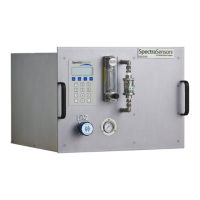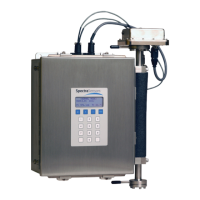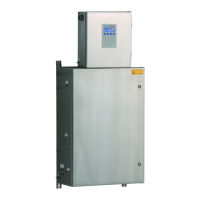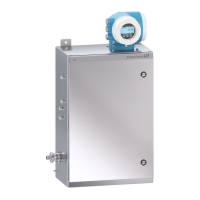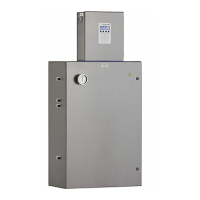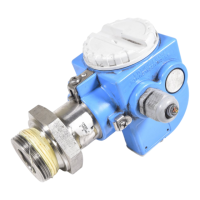Safety Manual 5–1
5 - MAINTENANCE AND SERVICE
This chapter provides safety information for the maintenance and service of the
SS2100 analyzer.
Potentially Hazardous Substances
SS2100 analyzers that detect H
2
S can acquire leaks that lead to unsafe
amounts of toxic gas. Refer to “Mitigating risks” on page 2-6.
Disposal of hazardous substances
For analyzers equipped with H
2
S scrubbers, discard used scrubber and
scrubber indicator in an appropriate leak-proof receptacle. Refer to “Disposal
of Used Scrubbers” on page 5-8.
Instructions for Cleaning and Decontamination
Tokeepthesamplinglinesclean
1. Make sure that a membrane separator filter (included with most
systems) is installed ahead of the analyzer and operating normally.
Replace the membrane if necessary. If liquid enters the cell and
accumulates on the internal optics, a Laser Power too Low fault
message at the display will result.
2. Turn off the sample valve at the tap in accordance with site lock-out,
tag-out rules.
3. Disconnect the gas sampling line from the sample supply port of the
analyzer.
4. Wash the sampling line with isopropyl alcohol or acetone and blow
dry with mild pressure from a dry air or nitrogen source.
5. Once the sampling line is completely free of solvent, reconnect the
gas sampling line to the sample supply port of the analyzer.
6. Check all connections for gas leaks. SpectraSensors recommends
using a liquid leak detector.
Depleted H
2
S scrubbers and scrubber indicators contain
predominantly Copper (II) Sulfide [CAS# 1317-40-4] with. some
remaining Copper (II) Oxide [CAS# 1317-38-0] and basic cupric
carbonate [CAS# 12069-69-1], each of which are odorless dark
powders that require few special precautions other than avoiding
contact with the internal substances, keeping the scrubber tightly
sealed and protecting the contents against humidity.

